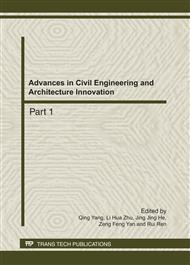p.3598
p.3602
p.3607
p.3611
p.3619
p.3624
p.3628
p.3632
p.3638
Ecological Architectural Technology Optimization Design — Longgang High School’s Cafeteria Design as an Example
Abstract:
Problems such as poor indoor environment, pollution to the surrounding environment and waste of water and power universally exist in the school’s cafeterias. In view of this, in the design of Hanzhong Longgang High School’s cafeteria, the pre-research was firstly made to discover and analyze the existing environmental problems and their causes; then the design objectives were brought forward to lower environmental pollution, improve indoor environmental quality, and reduce energy consumption. After that, ecological technological measures were selected and optimized to be applied to the architectural space design. Lastly, architectural scheme was created. In the architectural design, the ecological technology has been applied to achieve the proposed goals in order to create a healthy and comfortable dining environment for the students, and, at the same time accumulate experience on optimized design of ecological buildings.
Info:
Periodical:
Pages:
3619-3623
Citation:
Online since:
October 2011
Authors:
Keywords:
Price:
Сopyright:
© 2012 Trans Tech Publications Ltd. All Rights Reserved
Share:
Citation:


